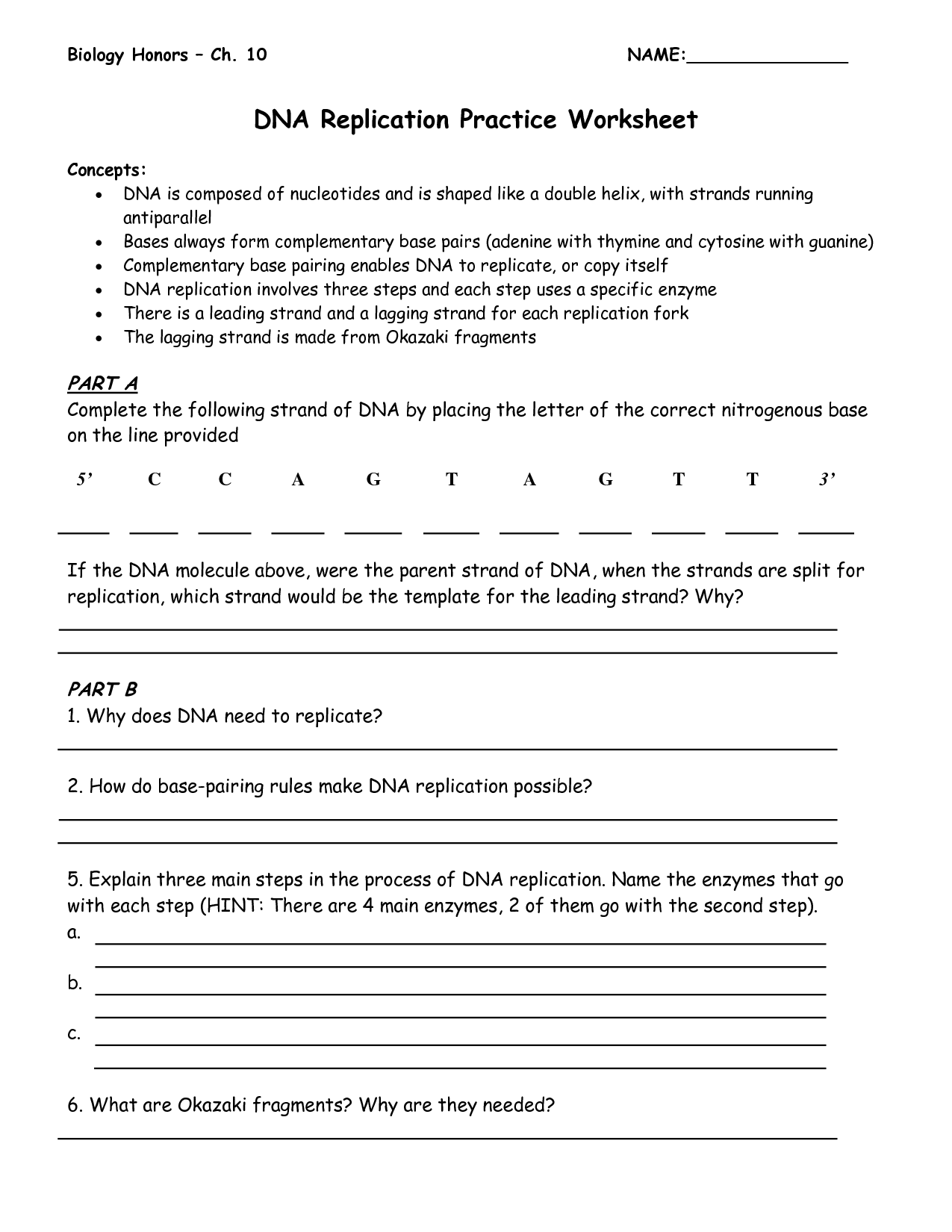DNA, or deoxyribonucleic acid, is a molecule that contains the genetic instructions for the development, functioning, growth, and reproduction of all known living organisms. It is composed of two long chains of nucleotides twisted into a double helix structure. Understanding the structure and replication of DNA is crucial in the field of genetics and molecular biology.
Replication is the process by which DNA makes a copy of itself during cell division. This ensures that each new cell receives an identical set of genetic information. The replication process is highly accurate, with only one error occurring in every billion base pairs copied. This remarkable fidelity allows for the transmission of genetic information from one generation to the next.
DNA Structure
The structure of DNA consists of two long chains of nucleotides that are arranged in a double helix. Each nucleotide is composed of a sugar molecule (deoxyribose), a phosphate group, and a nitrogenous base. The nitrogenous bases in DNA are adenine (A), thymine (T), cytosine (C), and guanine (G). These bases pair up in a complementary manner, with A always pairing with T and C always pairing with G. This base pairing allows for the accurate replication of DNA.
Replication begins when the two strands of the DNA double helix unwind and separate. An enzyme called DNA helicase helps to break the hydrogen bonds between the base pairs, allowing the two strands to separate. Another enzyme, DNA polymerase, then adds new nucleotides to each of the original strands, using the existing strands as a template. The end result is two identical copies of the original DNA molecule.
During replication, errors can occasionally occur, resulting in mutations in the DNA sequence. However, cells have mechanisms in place to correct these errors and maintain the integrity of the genetic information. One such mechanism is the proofreading ability of DNA polymerase, which can detect and correct mistakes as they occur. Additionally, cells have repair enzymes that can fix any damage to the DNA that may occur during replication.
In conclusion, understanding the structure and replication of DNA is essential for comprehending the processes of genetics and inheritance. The accurate replication of DNA ensures the transmission of genetic information from one generation to the next, allowing for the diversity and complexity of life on Earth. By studying DNA at the molecular level, scientists can gain insights into the mechanisms that govern life itself.
